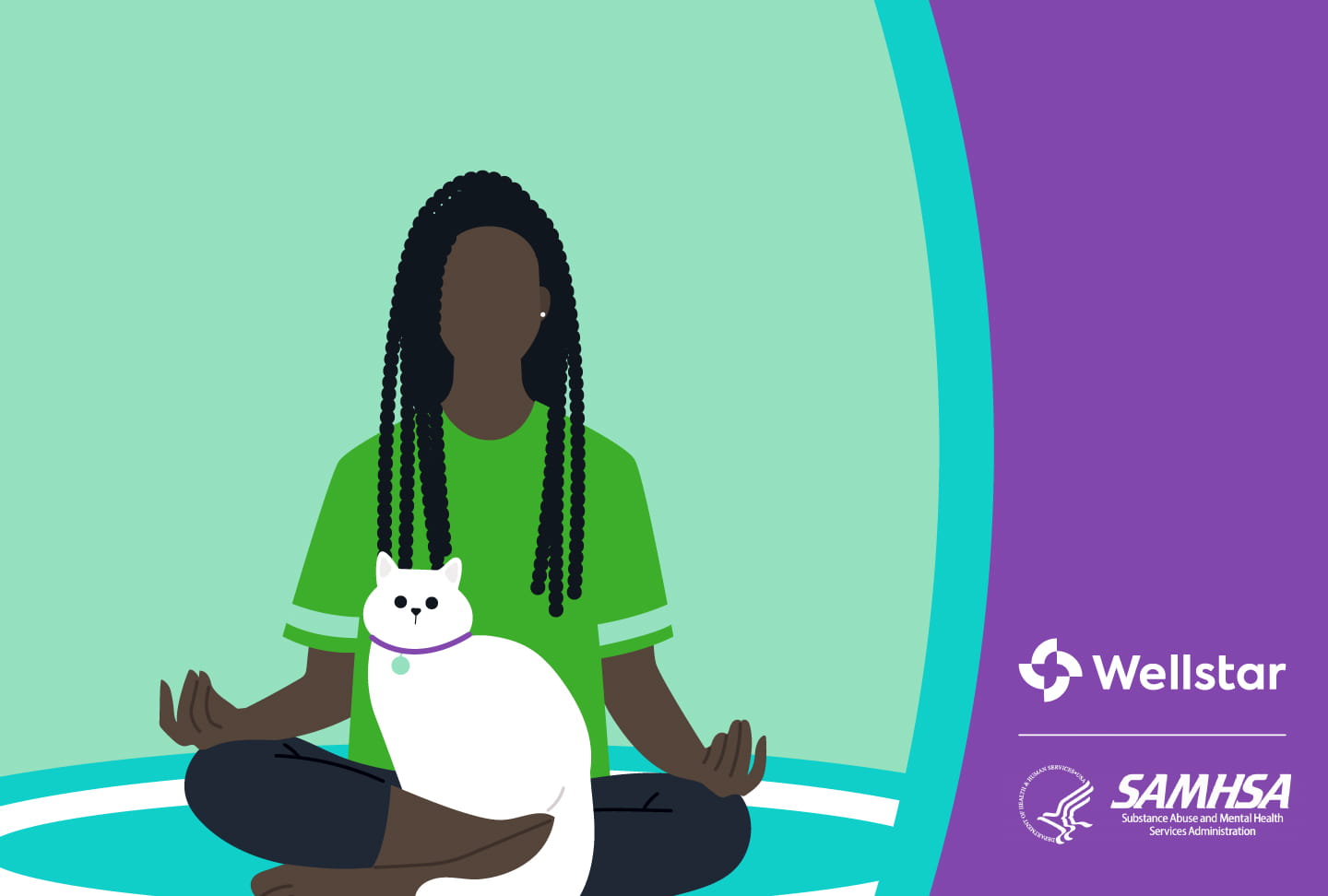With nearly one in five Georgians struggling with mental health challenges annually, treating mental health conditions and assessing suicide risk is a group effort between health professionals and state, local, and community partners. The U.S. Department of Health and Human Services (HHS), through the Substance Abuse and Mental Health Services Administration (SAMHSA), recognized Wellstar as the only system in Georgia and one of 25 nationwide to be awarded funding as part of a $2M Grant from the Biden-Harris Administration. The grant falls in the Cooperative Agreements to Implement Zero Suicide in Health Systems in the form of an intervention and prevention model for adults throughout our health system.
Wellstar launched a system-wide suicide prevention program in 2017 when the Behavioral Health Service Line adopted the national best-practice Zero Suicide Initiative (ZSI) framework developed by the Suicide Prevention Resource Center (SPRC) and the National Alliance for Suicide Prevention. During the earliest phases of implementation, Wellstar invited national experts from the SPRC to advise on best practices, hosted a series of focus groups with various Wellstar medical specialties and departments, conducted an organizational needs assessment, and convened a Zero Suicide Oversight Steering Council to oversee the development, implementation, and fidelity of the program.
“Behavioral health cannot own the problem alone independent of other members of the healthcare team. We have to consider a systemic approach – how we screen, assess, deliver care and address gaps throughout the entire healthcare continuum,” explained Ryan Breshears, PhD, ABPP, chief of Wellstar’s Behavioral Health service line and a board-certified clinical health psychologist.
Since the initial 2017 launch, Wellstar’s Suicide Prevention Team has implemented an improved suicide screening process for all Wellstar emergency departments and medical floors. These experts have also routinized collaborative safety planning to ensure safety interventions are initiated at the onset of the patient encounter and throughout the duration of care.
“The support of our executive leadership to launch this program in 2017, ongoing system collaboration, and commitment from our suicide prevention team has helped to save lives. The infusion of the SAMHSA grant funding received, in partnership with our Wellstar Foundation, will further enhance our reach and impact to the individuals in this vulnerable population,” says Trisha Velasco, assistant vice president of the Behavioral Health service line.
Wellstar’s receipt of the SAMHSA grant builds on the system’s established infrastructure through the provision of additional educational resources to healthcare clinicians and the community. It also increases access to evidence-based treatments shown to reduce suicidal thoughts. Specifically, funding will enable follow-up care for high-risk adults who are struggling with suicidal thoughts and/or have experienced a recent suicide attempt. Through this grant, SAMHSA aims to aid the program in continuing to reduce suicide ideation, suicide attempts, and deaths due to suicide.
This grant’s objectives align with Wellstar’s goals of reducing suicide attempts and suicide death rates among Georgians ages 18 and older by growing the existing Wellstar Zero Suicide Initiative. Adding community-based and treatment-focused strategies, including suicide prevention training throughout the organization coupled with identification, treatment, and care transition, Wellstar will continue strengthening the community. At least 5,000 patients across six Wellstar hospitals and emergency departments will receive care, including to residents in Bartow, Cherokee, Cobb, Douglas, Forsyth, Fulton, Harris, Paulding, Polk, and Troup counties.
Suicide is a leading cause of death in the United States, affecting people of all ages. While mental health plays a role, there are many other factors that may lead someone to contemplate suicide, and there are some warning signs to pay close attention to because they may indicate that someone is at risk of suicide, which include:
- Talking about wanting to die or kill themselves, or making comments like, “I wish I weren’t here,” or “Nothing matters.”
- Talking about feelings of hopelessness, being a burden to others, feeling trapped, or being in unbearable pain.
- Exhibiting impulsive or reckless behaviors, acting more irritated or anxious than normal, and extreme mood swings.
- A change in habits related to appearance, eating, drinking, or sleeping.
- Increasing the use of alcohol or drugs.
- Withdrawing or isolating themselves.
- Signs of self-harm like cuts or scratches.
The research is clear that enhancing feelings of belonging and connection is a powerful method of reducing suicidal thoughts and behaviors. While suicide can be a difficult topic to talk about, speaking about it non-judgmentally can offer hope. In contrast, avoiding the discussion can contribute to feelings of isolation, further contributing to devastating outcomes.
If you suspect a loved one is at risk for suicide, talk with them. Here are some tips to help guide your conversation:
- Be available.
- Be non-judgmental and maintain curiosity.
- Talk less.
- Listen more.
- Allow your loved one to express their feelings.
- Validate that their feelings make sense.
- Ask how you can be helpful. “
- Offer hope that treatment alternatives are available without offering insincere reassurance.
- Follow-up after the initial conversation.
- Show interest and support.

 KevinCare
KevinCare Historic $50M Gift
Historic $50M Gift 
